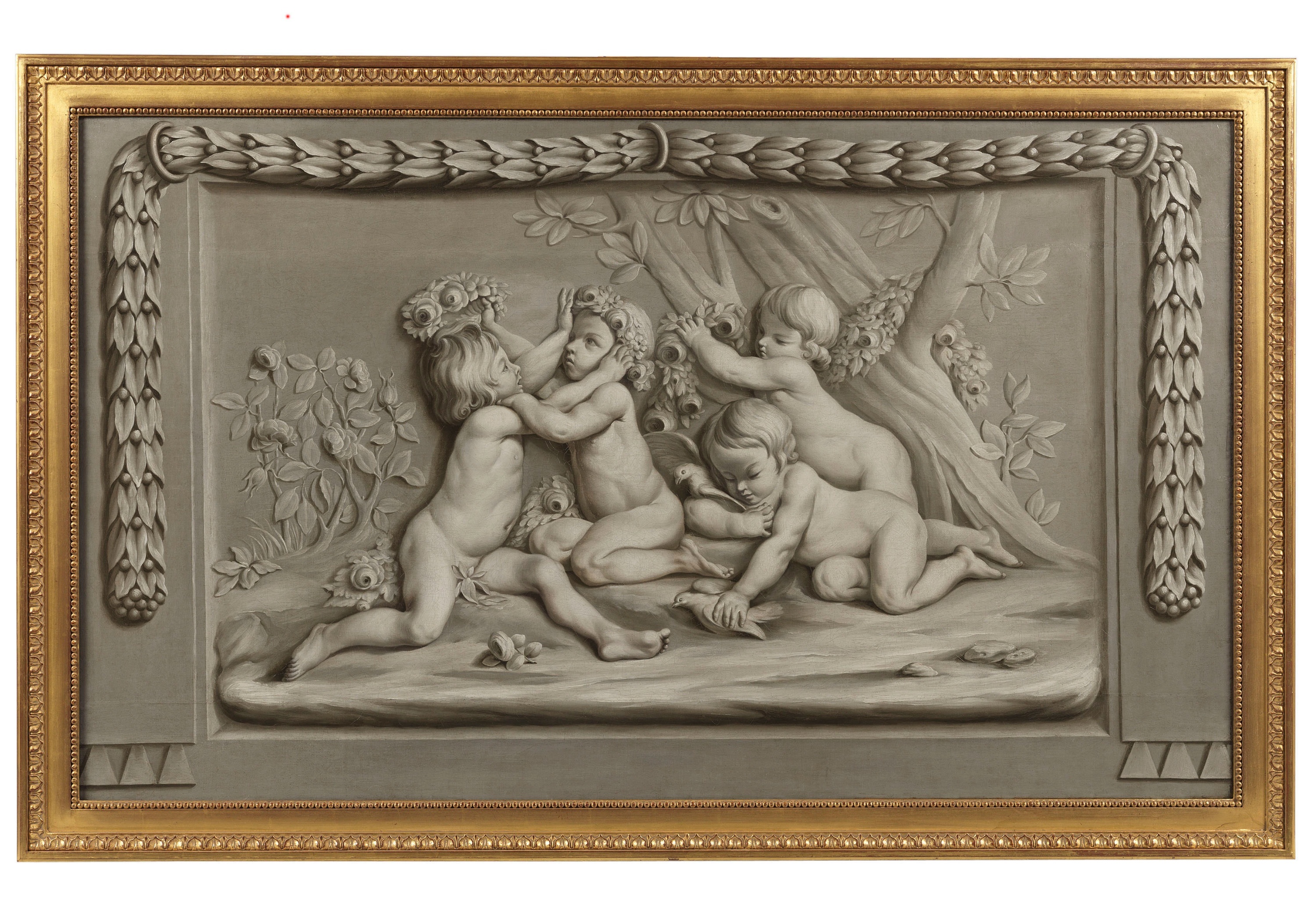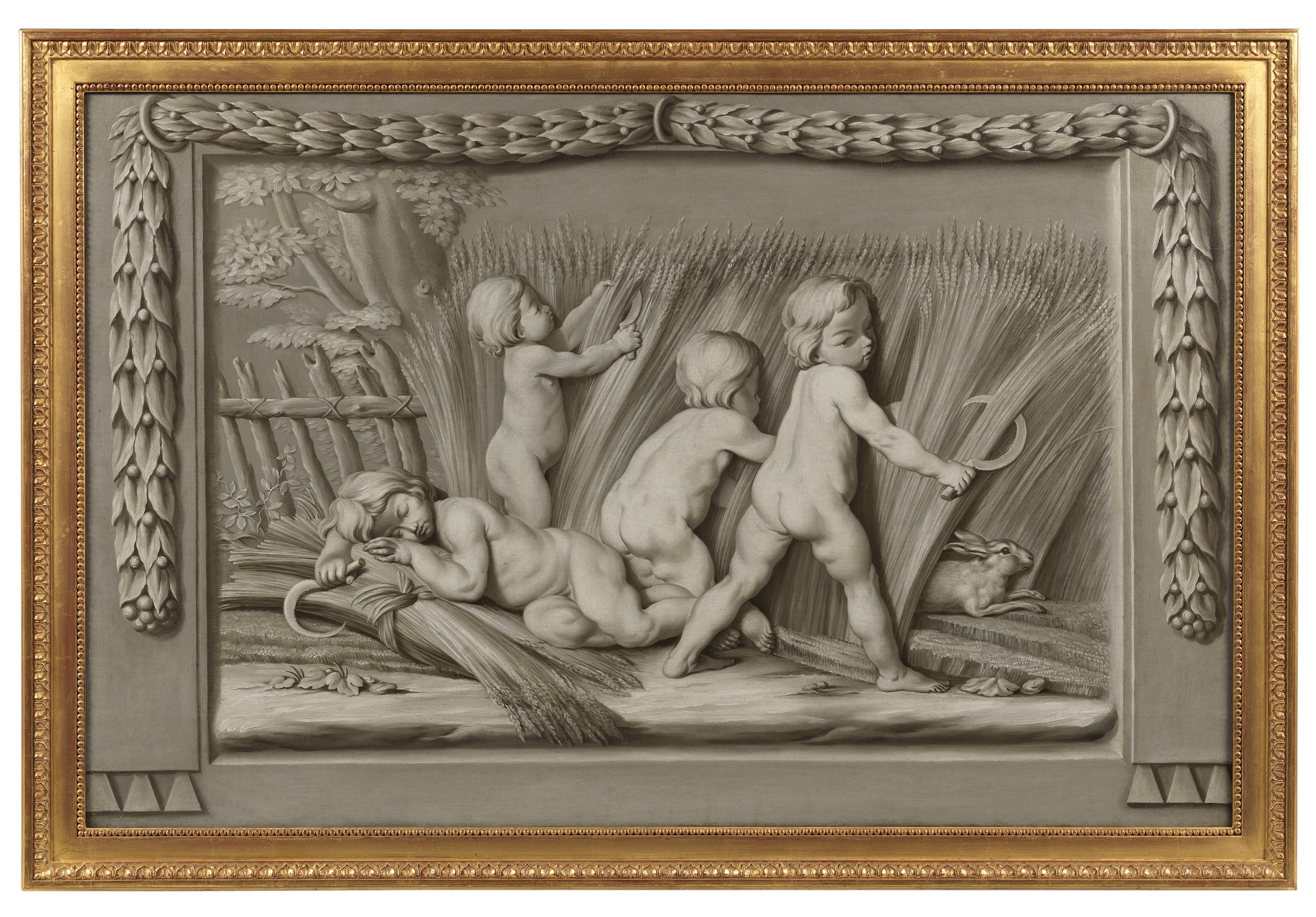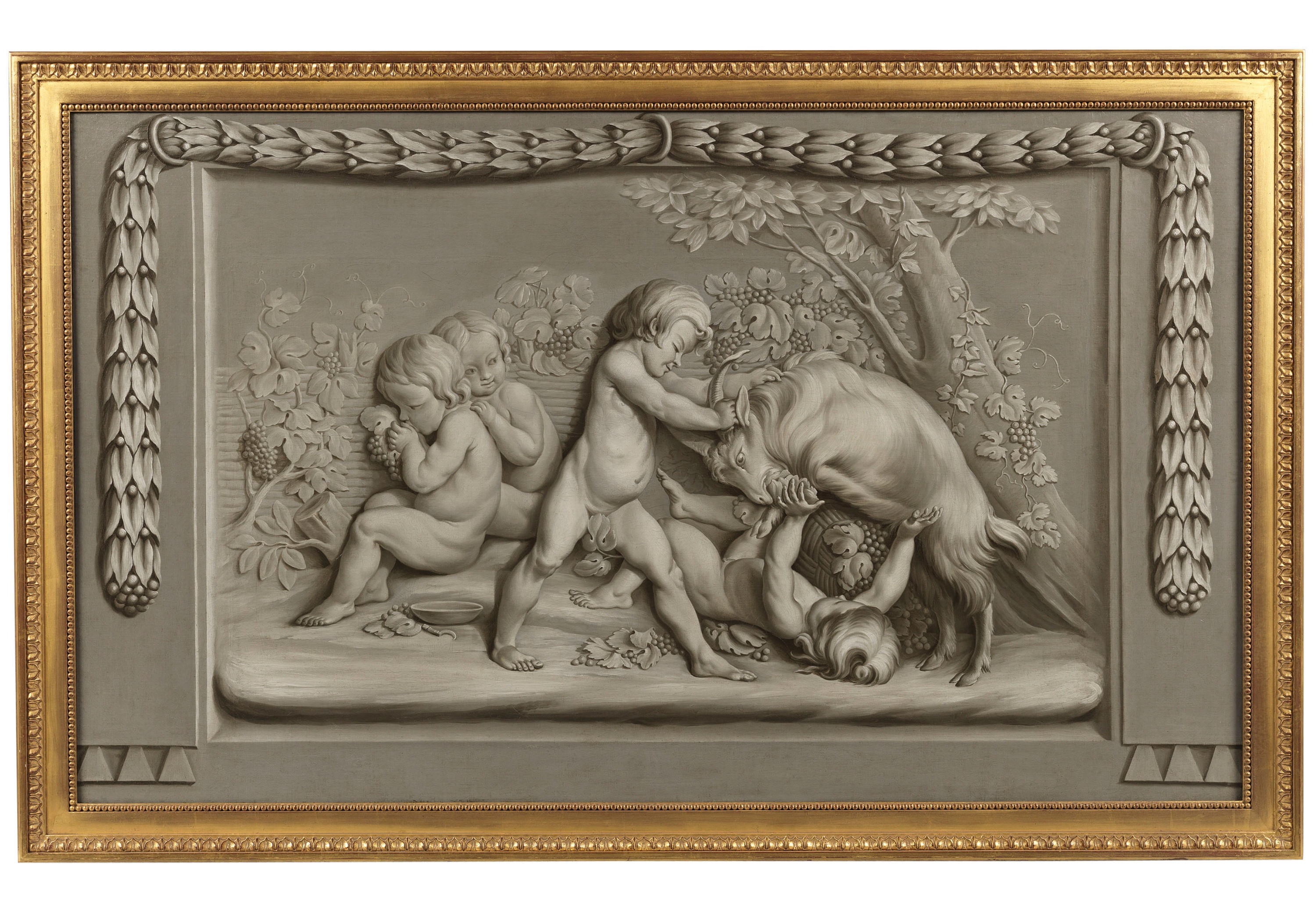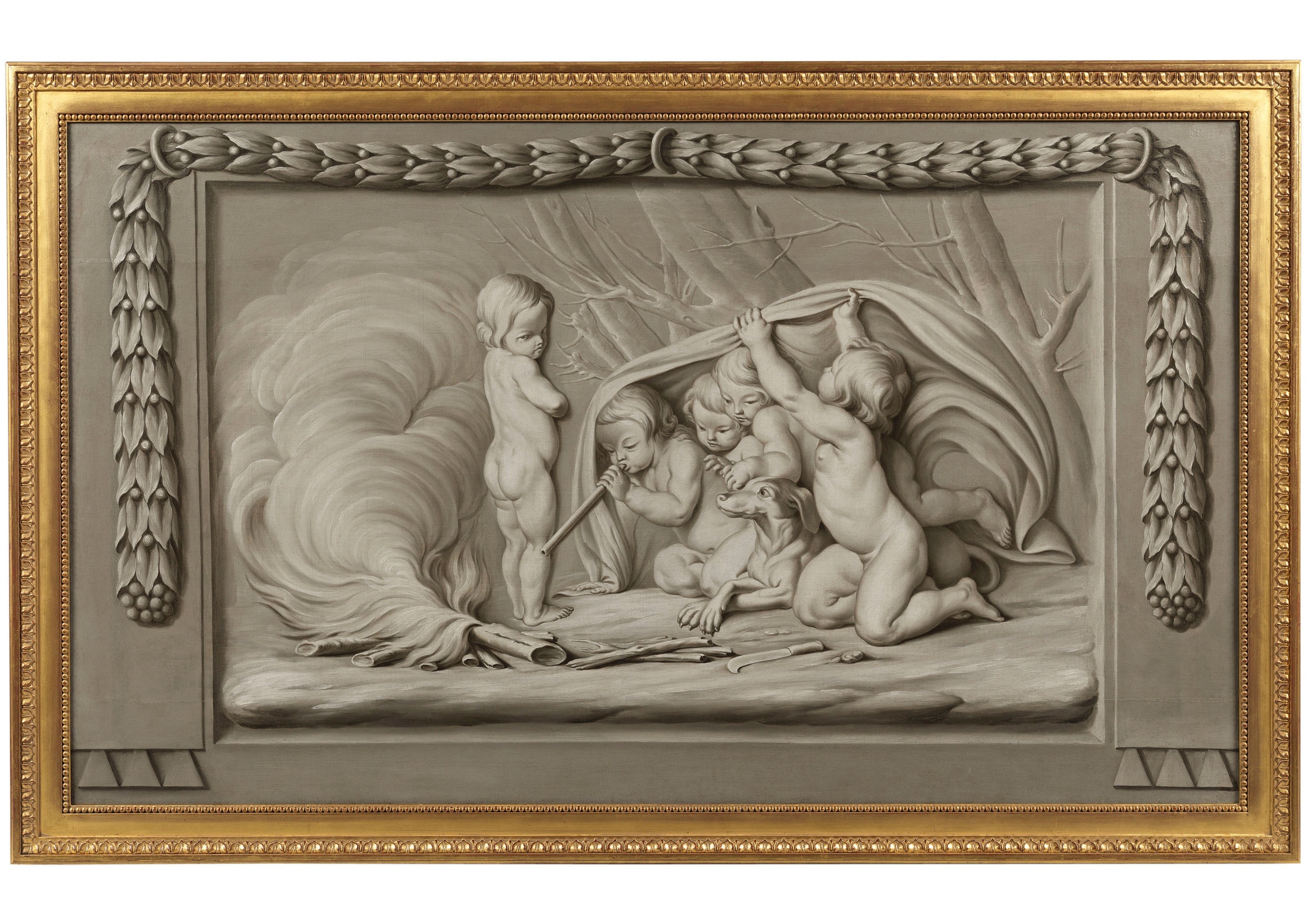



Circa 1739-1745




A set of four 18th century oil paintings, attributed to Piat Joseph Sauvage depicting the four seasons. These paintings were inspired by the four bas-reliefs executed in 1739-1745 by Edme Bouchardon for the Fontaine de Grenelle, Paris.
Allegories of Spring, Summer, Autumn and Winter en grisaille, the friezes depicting putti at play.
The Fontaine des Quatre-Saison is a monumental 18th century public fountain, at 57-59 rue de Grenelle in the 7th arrondissement of Paris, France. It was executed by Edme Bouchardon 1689-1762, royal sculptor of King Louis XV (ruled 1715–1774), and opened in 1745. The Fontaine des Quatre-Saisons was the largest and most ornate of the thirty fountains built in Paris in the 18th century to provide drinking water to the city's residents.
Autumn Width: 60 in, 153 cm, Height: 37.5 in 96 cm
Spring Width: 58 in, 147 cm, Height: 36.5 in 93 cm
Summer Width: 56 in, 142 cm, Height: 37.5 in 96 cm
Winter Width: 60 in, 153 cm, Height: 37.5 in 96 cm
Sauvage was a Belgian painter (1744-1818), who worked for a time in Brussels under the rule of the Habsburgs. He then joined the Saint Luc Academy in Paris and painted several over door paintings for the Chateau de Fontainebleau. A very similar set of the four seasons was painted for the Dairy at Fontainbleau. As his fame grew, he was chosen as the official painter of the Prince de Condé and then by Louis XVI and the Royal family. During this period, he painted Marie-Antoinette and produced paintings for the chapel of Saint Cloud. After the revolution from 1804 to 1807 he painted porcelain figurines for the famous Sèvres porcelain factory.